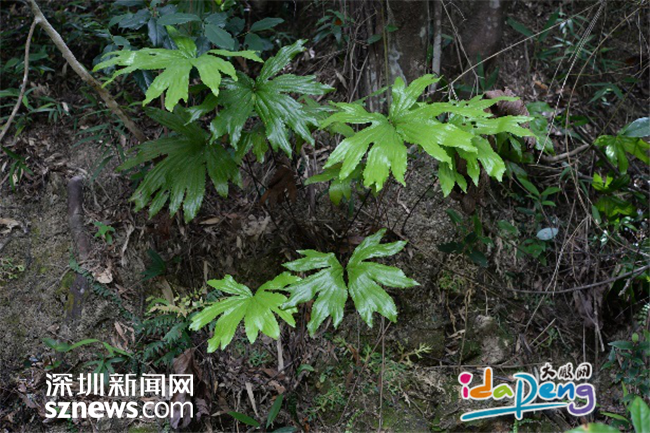

This year, Dapeng New District launched a survey of biodiversity in typical habitats located on the Dapeng Peninsula, including natural mountains and rivers, mangrove forests, mudflats and coral reefs.
To date, 13 species of wild plants under national protection have been surveyed in the land area, accounting for about one-third of the total number of wild plants for national protection in Shenzhen. This includes one Class I State-protected species of wild plant (purple-patterned tulip) and 12 Class II State-protected species of wild plants (catkin yew, Pu’er tea, golden chicken fern, soft-fruited Ormosia, sword-leaf Cymbidium, Brainea insignis, Angiopteris fokiensis hieron, Aquilaria sinensis, Morinda root, Ormosia indurata, Mountain kumquat and Alsophila spinulosa).

Dipteris shenzhenensis
Thus far, 15 species of wild animals under Class II national protection have been surveyed in Dapeng, including the leopard cat, brown-winged cuckoo, rock heron, crested serpent eagle, crested eagle, black kite, collared horned owl, white-breasted jadeite, painted frog, Chinese tiger frog, common birdwing, white cloud mountain minnow, Hong Kong Newt, crested honey buzzard, and the Gekko reevesii. There are eight species of wildlife under the key protection of Guangdong Province, including egrets, great egrets, herons, pond herons, night herons, cattle-backed herons, yellow-breasted mice, and red muntjacs.

Black kite
During the survey of wild animals living in the land area, three newly recorded small mammals in Shenzhen were discovered, the Hypsugo cadornae, the Pipistrellus coromandra and the Tylonycteris tonkinensis, all of which belong to the bat order Chiroptera.

Clark's anemonefish
The coral reef group survey discovered 32 species, 24 genera and 16 families of the Scleractinia, which are under Class II national protection. The highest habitat density of coral fish can reach 102.1 ± 45.3 ind. 250 m2, the highest coral coverage up to 39.8%. The mudflat survey found that the density of large benthic (bottom dwelling) animals can reach 15000 ± 900 ind. m2.